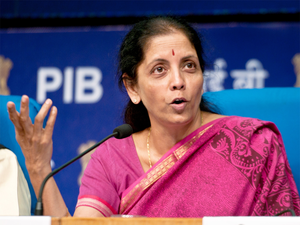
The Government coming back to power with a strong mandate was reflected in this Budget in its continuation of its earlier policies of a greater focus on compliance and taxing more those who can afford to pay more taxes. There is no change proposed in tax rates or slabs. This is understandable as it had earlier in its interim Budget granted relief to the common man by raising the standard deduction by Rs 10,000 and had done away with notional taxation of second self-occupied house. The most important step taken that time was relieving from taxes those with taxable income of up to Rs 5 lakh.
In the full Budget, it has been proposed to raise the surcharge from 15 percent to 25 percent for those in the income bracket Rs 2 crore to Rs 5 crore and to 37 percent for those with income exceeding Rs 5 crore. The maximum marginal tax rates have been increased to 39 percent and 42.74 percent, respectively, for such taxpayers. There was an expectation that the Government might introduce inheritance tax to garner additional revenue from the rich, but it chose a simpler way of collecting more tax by raising the surcharge.
According to the recent data available, there are only 81,344 individual taxpayers who filed returns of income of more than Rs 1 crore for FY2016-17 (source: CBDT press release dated October 22, 2018). So those filing more than Rs 2 crore will be even fewer, and yet collections will be reflected as levies on high income group taxpayers who contribute the most to the tax collection kitty. Foreign companies that depute their expatriate employees to India will be severely impacted, since such expatriate employees are generally 'tax equalised' (their companies bear their taxes). After grossing up taxes, their net outflow will be more.
There are several proposals in this Budget to tighten compliance. For example, 2 percent TDS on cash withdrawal exceeding Rs 1 crore from bank or post office accounts or 5 percent TDS on payments made to contractors or professionals exceeding Rs 50 lakh and then mandatory filing returns for deposit of more than Rs 1crore in a current account, or expenditure of an amount exceeding Rs 2 lakh on foreign travel or more than Rs 1 lakh on electricity bills will keep such individuals under the scanner.
Making Aadhaar and PAN interchangeable for return filing and quoting either for transactions indicates the Government's will to use Aadhaar to track all financial transactions. Those PANs that are still not linked to Aadhar will soon become inoperative.
We have been seeing increasing use of technology and automated processes by the tax authorities. This Budget proposes passing on the benefit of technology by providing pre-filled return forms that will even include details of capital gains. This will set an expectation that when the compliance level is mature, taxpayers with simpler sources of income such as salaries and bank interest, and in cases where all taxes have been paid through withholding, the tax filing requirement may be done away with. Putting in place a road map for faceless audits and expanding online filing of lower or nil withholding certificates on payments to non-residents are other positive steps aimed at improving efficiency and checking corruption.
The Finance Minister has also tried not to let the common man go away without a smile from this Budget. Introducing an additional interest deduction of Rs 1.5 lakh for first-time home buyers buying a house costing up to Rs 45 lakh or deduction of interest paid up to Rs 1.5 lakh for first- time buyers of electric vehicles are likely to benefit the middle class. Proposals have been made in the Budget that will implement to the Central Government's earlier announcements in relation to NPS, regarding raising its own contribution to Tier I accounts from 10 percent to 14 percent for its employees and also increasing its contribution and employees' contribution to Tier II accounts with a lock-in period of three years (for deduction of under section 80C). Raising exemption of lump sum payment from NPS on its closure from 40 percent to 60 percent for everyone will raise NPS to an exempt-exempt-exempt status.
Overall, considering India's slow GDP growth and the uncertain global environment, this is a good Budget for a new India to make it stronger to walk the growth path, grow stronger and emerge as Strong India.
(The author is Partner and Leader - Personal Tax, PwC.)
Read More News on
(Your legal guide on estate planning, inheritance, will and more.)
Download The Economic Times News App to get Daily Market Updates & Live Business News.
Read More News on
(Your legal guide on estate planning, inheritance, will and more.)
Download The Economic Times News App to get Daily Market Updates & Live Business News.









 Get Unlimited Access to The Economic Times
Get Unlimited Access to The Economic Times
